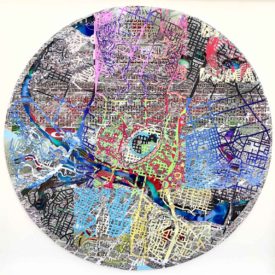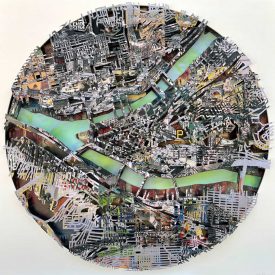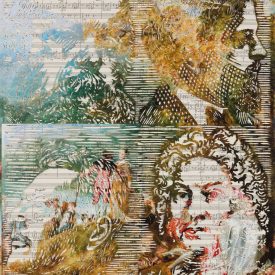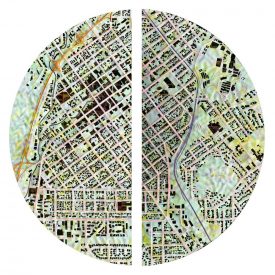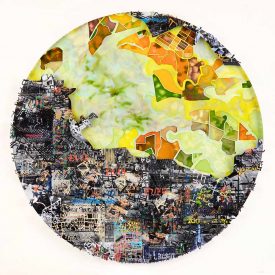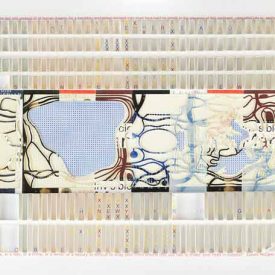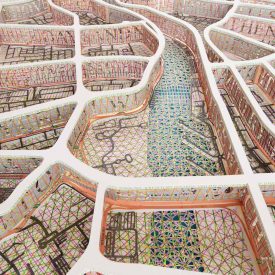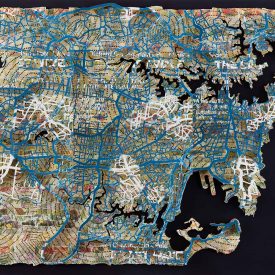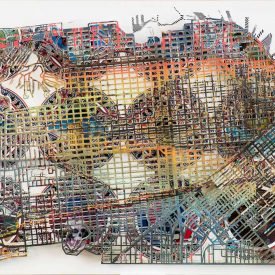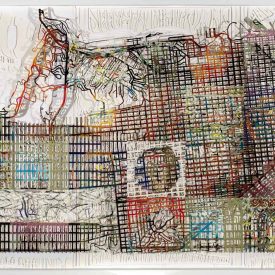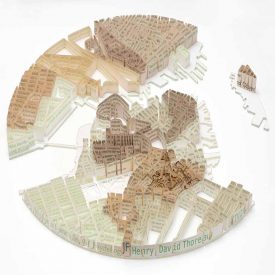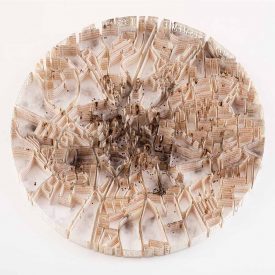The sculpture of Dubai creates a two panel cartographic landscape of Dubai stretching from the original historic settlements of the Dubai creek to the Burj Khalifa.
Dubai is a city that has recently blossomed in the Desert due to the vision and will of the current Sheik, Mohammed Bin Rashid Al Maktoum. Since Peter The Great built St Petersburg in the Eighteenth century few individuals have had such a far reaching vision in the creation and shaping of a city. Dubai, once a small trading port has been transformed in a remarkably short space of time in to a cosmopolitan and very modern city. The plan for the city has sought to embrace and encourage the most contemporary architectural structures and forms. The sculpture of Dubai takes the form of interlinking geometries, referencing the modern forms of the city that have, in a sense been etched and sculpted into the Desert sands. The geometric drawings in the sculpture reference the complex interlocking forms of contemporary architecture and also have a relationship to the interlocking infinities of traditional Islamic art. Below the background drawing and underneath the creek and the gulf waterfront are wave pattern forms in color enabling the beach front and waterways to be visible.
The texts in the sculpture have been taken from some of the Nabati poetry of the United Arab Emirates. Lines of Poetry from the poets Ali Bin Aziz al Mansuri, Rubayya bin Yaqut, Shaykh Zayid and HH Al Maktoum thread their way throughout the sculpture. The Nabati poetry articulates a moral and ethical code which underpins the current civilization of the United Arab Emirates and Dubai. The function of the poet in Arabian tradition was to act on behalf of the society. “In essence, the poet was a spokesperson for his fellow tribesmen, no different from them, but able to reinforce through his art an outlook on life and a historical landscape known to and shared by all” -Clive Holes

